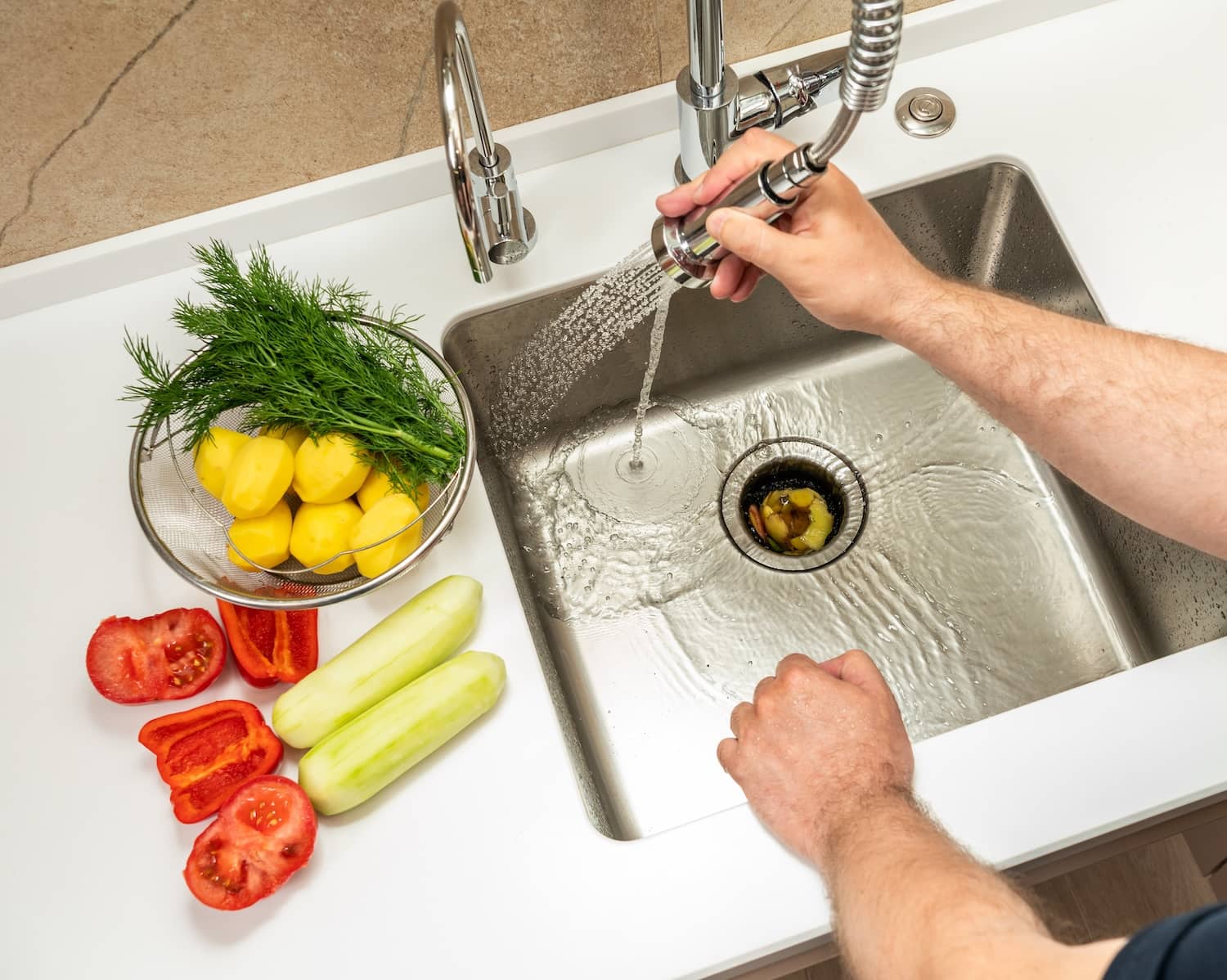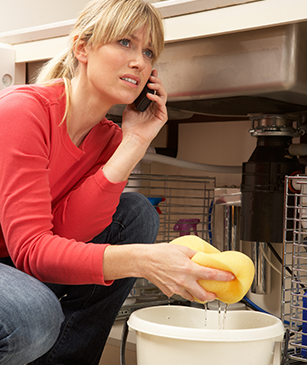Straightforward Ways to Repair a Leaky Waste Disposal Unit
Straightforward Ways to Repair a Leaky Waste Disposal Unit
Blog Article
Every person has got their own opinions when it comes to The Handy Guide To Fixing Your Garbage Disposal Leaking.

Waste disposal unit are necessary cooking area appliances that help in dealing with food waste successfully. Nevertheless, a dripping waste disposal unit can be a frustrating and messy trouble to manage. Thankfully, several leakages can be repaired easily with a couple of simple steps. In this post, we will review exactly how to take care of a dripping garbage disposal efficiently.
Intro
Garbage disposals are set up under kitchen sinks and are created to shred food waste into smaller sized pieces, allowing it to pass through the pipes system easily. While these gadgets are typically reliable, leaks can occur gradually as a result of wear and tear, loosened connections, or damages to the device.
Typical Sources Of Leakages in Waste Disposals
Worn Seals and Gaskets
Seals and gaskets play an essential role in avoiding water from leaking out of the waste disposal unit. With time, these parts can wear away, resulting in leakages around the disposal unit.
Loose Connections
The links between the waste disposal unit and the pipes system can end up being loosened with time, creating water to leak out throughout procedure.
Cracks or Holes in the Disposal Unit
Physical damages to the waste disposal unit, such as splits or openings in the housing, can likewise cause leaks.
Determining the Source of the Leak
Prior to trying to repair a leaking garbage disposal, it is important to identify the resource of the leak. This can generally be done with aesthetic examination or by performing simple examinations.
Visual Evaluation
Examine the waste disposal unit system meticulously for any signs of water leakage. Pay close attention to areas around seals, gaskets, and link points.
Checking for Leakages
One way to evaluate for leakages is by running water via the disposal device and looking for any noticeable indications of leakage.
Tools and Products Needed for Taking Care Of a Leaking Waste Disposal Unit
Prior to starting the repair process, gather the essential devices and products, consisting of a screwdriver, flexible wrench, plumber's putty, substitute seals or gaskets, and epoxy or patching material for repairing fractures or holes.
Step-by-Step Overview to Fixing a Dripping Garbage Disposal
Switch off the Power
Prior to attempting any kind of repair work, ensure that the power to the garbage disposal unit is shut off to prevent the danger of electrical shock.
Situate the Leak
Identify the exact place of the leak and establish the reason.
Tighten Links
Use a wrench to tighten any type of loose links in between the disposal device and the plumbing system.
Change Seals or Gaskets
If the leak is because of worn seals or gaskets, eliminate the old elements and replace them with brand-new ones.
Patching Cracks or Openings
For splits or openings in the disposal unit, use epoxy or a suitable patching product to seal the damaged location.
Evaluating the Waste Disposal Unit After Repair Work
As soon as the repair service is complete, test the garbage disposal by running water through it to ensure that the leakage has actually been resolved.
Preventive Upkeep Tips to Stay Clear Of Future Leaks
To stop future leaks, it is important to perform normal upkeep on your garbage disposal. This consists of keeping it clean, staying clear of putting non-food products or tough objects down the disposal, and regularly checking for leaks or other concerns.
Conclusion
To conclude, repairing a leaking garbage disposal is a fairly uncomplicated procedure that can be completed with basic devices and materials. By complying with the steps outlined in this short article and practicing preventative upkeep, you can keep your waste disposal unit in good working condition and avoid costly repair work in the future.
HERE’S HOW TO FIX YOUR GARBAGE DISPOSAL
WHAT TO DO IF SOMETHING IS STUCK IN YOUR GARBAGE DISPOSAL
If the impeller won’t turn, there’s probably something stuck in the disposal. It could be a steak bone or peach pit, although plumbers report pulling all sorts of inappropriate objects out of disposals, such as bottle caps or aluminum foil. Make sure power to the disposal is off, and look inside to see if you can see the source of the jam.
Never stick your fingers in a disposal. Pull out anything you see with tongs or pliers.
If the disposal still won’t work, it may be time to call a plumber or consider buying a new disposal. GEM Plumbing & Heating is here for all of your garbage disposal needs.
WHAT TO DO IF YOUR GARBAGE DISPOSAL DRAIN IS CLOGGED
Take everything out from underneath your sink and put a bucket or other container under your disposal to catch any water that drains out. Disconnect your disposal from the power supply. If it’s plugged into a wall outlet, unplug it. If it’s hardwired into an electrical box, go to the electrical panel and turn off the breaker for the disposal. Pour ¼ cup of baking soda into the drain, followed by ½ cup of white vinegar. Give the solution a few minutes to fizz and do its work. Look into the disposal with a flashlight to see if you can see an object that might be causing the clog. If you see it, remove it using tongs or pliers. MORE TIPS ON DEALING WITH A CLOGGED GARBAGE DISPOSAL
Never use drain cleaner in a garbage disposal. It can damage the plastic parts inside the disposal. You can also be splashed with the caustic liquid while working to clear the clog. Beware! Never stick your fingers into a garbage disposal. Trust us — not a good idea. In many instances, your dishwasher drains through your garbage disposal. This allows the disposal to grind any large food particles that may be drained out of your dishwasher. There are some jurisdictions, however, where the plumbing code prohibits such a connection. WHAT TO DO WHEN YOUR DISHWASHER DRAINS THROUGH THE DISPOSAL
Run some water in the sink so your plunger has at least a ½-inch of water to create a seal and plunge vigorously up and down several times. You may need to repeat this several times. Run hot water down the drain to clear any residue that remains.

I found that entry about Why Is when doing a lookup on the search engines. So long as you enjoyed reading our post if you please do not forget to pass it around. Thanks a lot for going through it.
Call Today Report this page